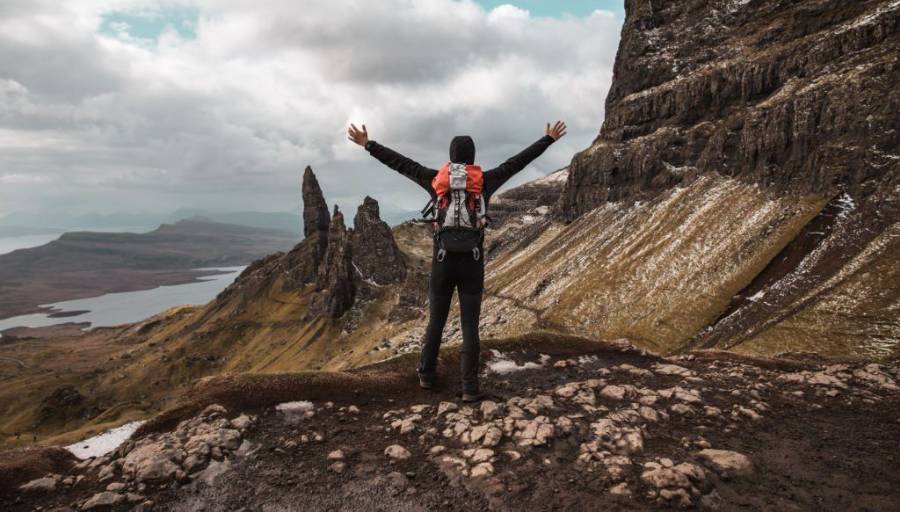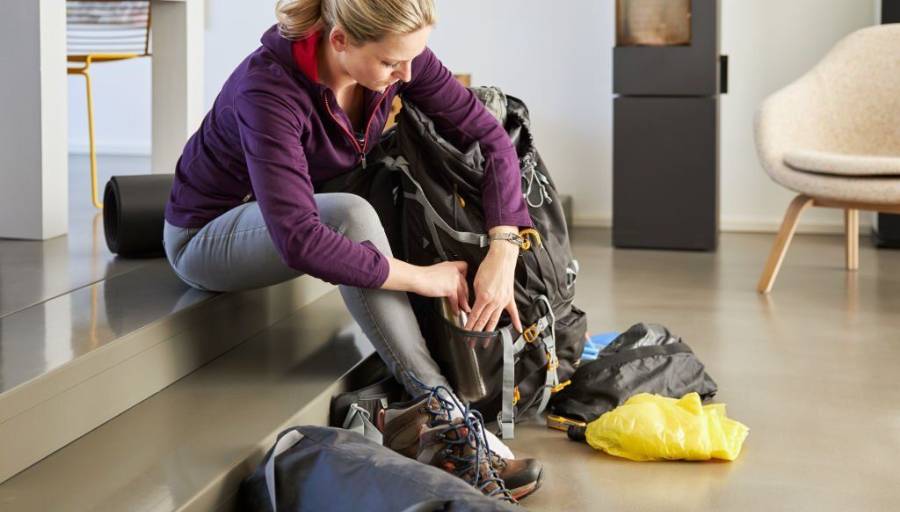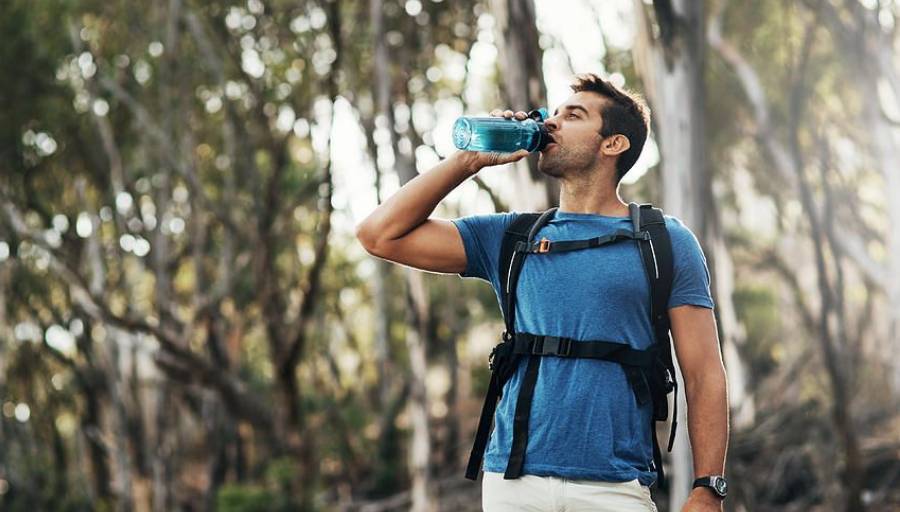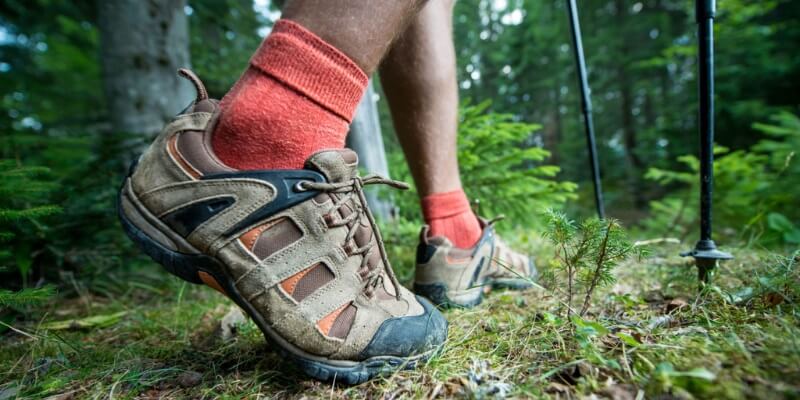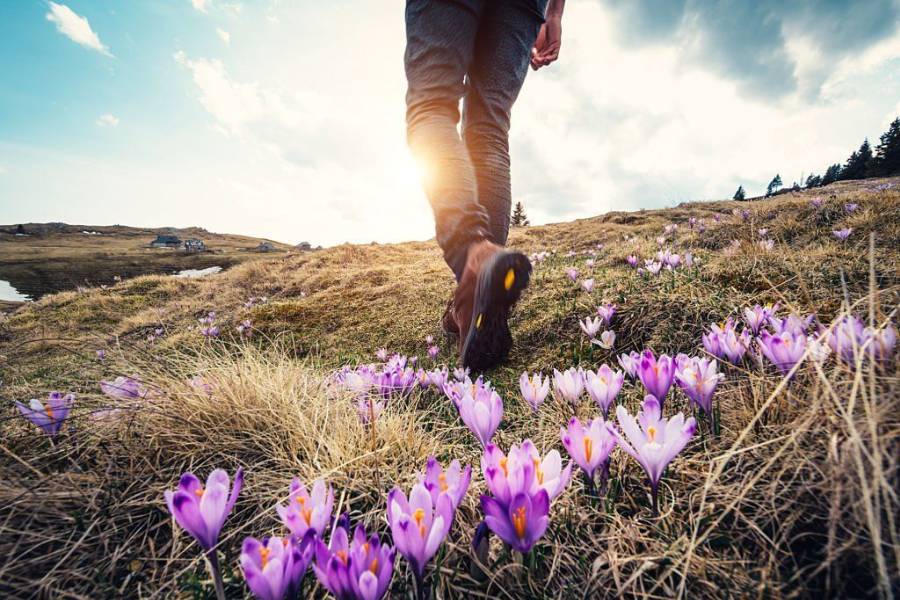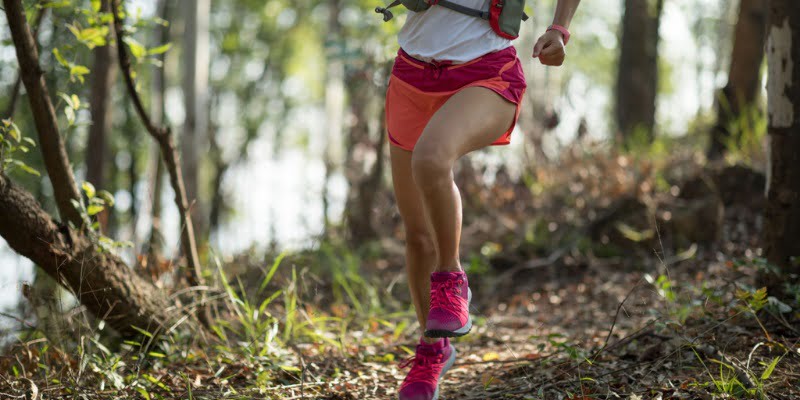How to Prevent Blisters When Hiking
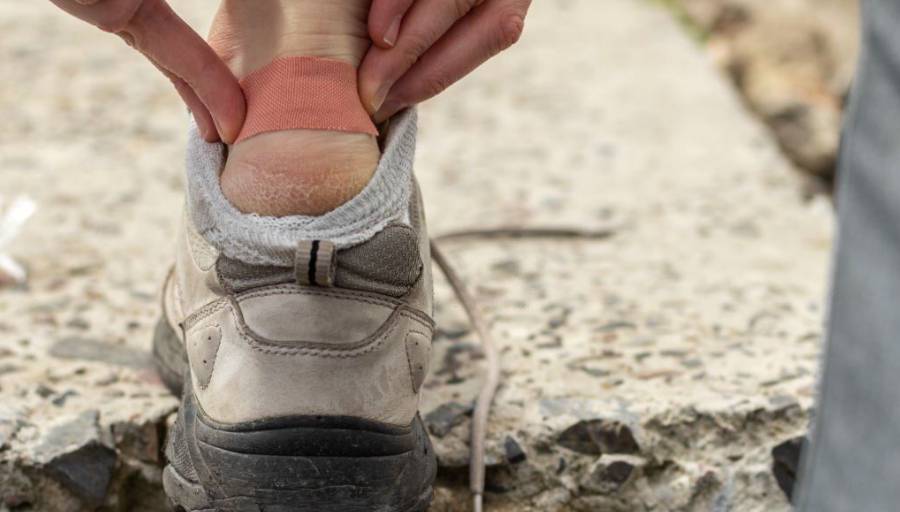
Foot blisters are a common challenge for hikers, whether you’re beginners or seasoned adventurers. Dealing with these painful nuisances can sometimes even lead us to abandon our plans for long-distance hiking. Instead of resigning ourselves to waiting for blisters to appear and then treating them, there are numerous preventive measures that can be taken before, during, and after a day’s hike.
Here’s a guide to help you learn all the tips on how to prevent blisters when hiking:
Appearance of Blisters on the Foot
The occurrence of foot blisters is influenced by various factors present during a hike. Before delving into preventive measures, let’s briefly revisit the causes behind their development.
Causes of Development of Blisters
Foot blisters in the context of hiking develop because of 3 factors:
- Friction: With each step, your foot rubs against your sock or insole, causing the epidermis to heat up.
- Humidity: You’ve likely observed that your feet sweat during walking. The moisture produced by perspiration softens the skin, promoting its detachment through friction.
- Dirt/Impurities: Surface debris, dust, or even sand easily find their way into our hiking shoes. Their irregular shapes can significantly hasten the formation of blisters on the feet.
When you combine these three factors, you get a favorable environment and context for the occurrence of foot blisters. The skin (softened by the humidity and heated by friction, peels off) creates a blister and gradually fills with a serous fluid: the blister is arised!
Several Areas of the Foot Affected
For hiking, only the feet are likely to see blisters appear. While our feet are supposed to be tougher than other parts of our body, they aren’t used to covering that much distance all day.
3 places of the feet are the source of the appearance of blisters: the heel, the beginning of the toes, and the arch of the foot. This is easily explained: these are the 3 areas that support our body when we walk.
The heel, toes, and arch of the foot sink into the sand as they bear the weight of the body during walking. Consequently, it is crucial to focus on preventing the occurrence of blisters in these specific areas of the foot.
Prevent Foot Blisters Before Hiking
The prevention of blisters is carried out in three key stages in the context of hiking: before the day of walking, during the day, and after the hike.
Choose Suitable Equipment
I have already touched on the subject in another article that dealt with methods of care for the blister on the foot, but the choice of the material is of course one of the basic principles of the prevention of their appearance. The selection of your socks and hiking shoes should not be taken lightly!
Here are some golden rules to avoid blisters thanks to suitable equipment:
- Hiking shoes: choose specialized shoes for hiking, that better support your ankles and feet and therefore limit the risk of chafing. Also, remember to buy one size larger than usual. Do you wear a 40? Take 41! This will leave room for the hiking socks.
- Walking soles: when you go to a specialized hiking store to buy your shoes, you can also take the opportunity to find insoles adapted to the morphology of your foot. Some people take more support on the heel, others on the beginning of the big toe. In short, everyone has a posture of their own and this is reflected in the way we put our feet when we walk. Take the time to find the pair of insoles that reduces friction. This will reduce the appearance of blisters!
- Anti-blister socks: everyone knows about hiking socks, but few people know that brands offer socks that reduce the effect of chafing. So make sure to choose a good pair of anti-blister socks.
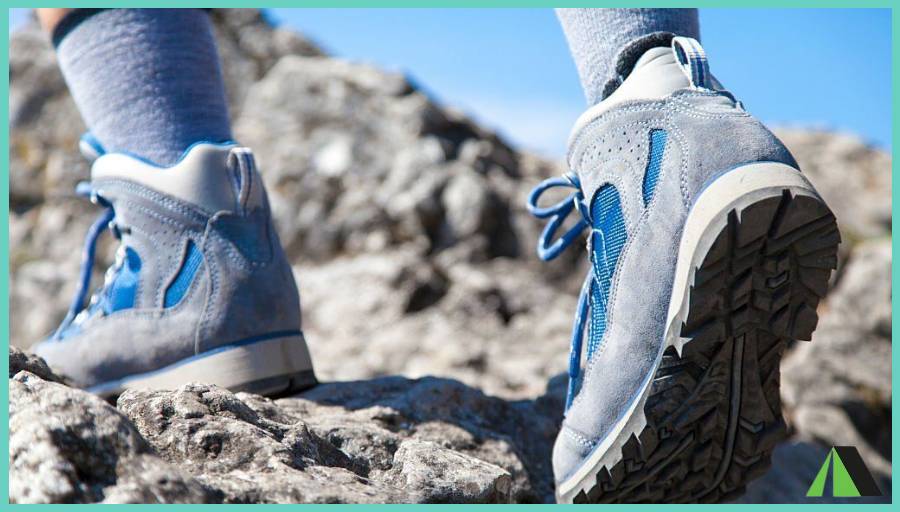
Prepare Your Feet Beforehand
If your goal is to go on a long-distance trail in a few weeks, then you will need to prepare your feet beforehand. For this, you must multiply the short walks to accustom your skin to future friction and to make your new hiking shoes comfortable. Above all, don’t make the mistake of embarking on a long hike lasting several days with new shoes! Give them time to adapt naturally to your gait and the morphology of your feet.
It is also recommended to prepare your skin with an appropriate anti-friction cream such as Akileine Anti-Callous. When applied daily, this will soften the epidermis and will strengthen its ability to resist friction and heating. It prevents the formation of redness and blisters. To ensure its effectiveness, initiate this preparation at least a week before embarking on the long trail.
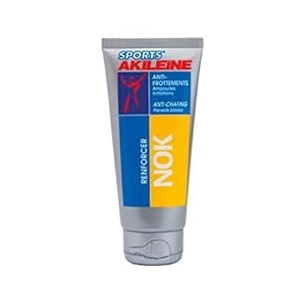
Tips on How to Prevent Blisters When Hiking
A few weeks before the hike, you acquired the appropriate equipment and primed your feet and shoes. Now, it’s essential to persist in the prevention of foot blisters every morning before setting out on the trail again.
A Few Things to Do in the Morning
In the morning, just before leaving for a day’s walk and before putting your socks and shoes back on, you can take a few preventive measures. Begin by gently massaging the most sensitive areas of the foot, focusing on the three regions prone to blister formation.
Note that dedicating 5 minutes to massaging each foot contributes to the ongoing softening, complemented by the application of anti-friction cream. Subsequently, continue using the cream each morning to sustain the preventive action initiated before the hike. If you feel (the day after the first day of walking) that a part of the foot is particularly hot, then you can apply talcum powder there. This will have two benefits: reduce moisture in the shoe but also friction.
Finally, you can put strips around the arch of the foot or the heel to mechanically limit friction. And don’t forget to tie your shoes well, because a badly held foot moves a lot and becomes subject to friction!
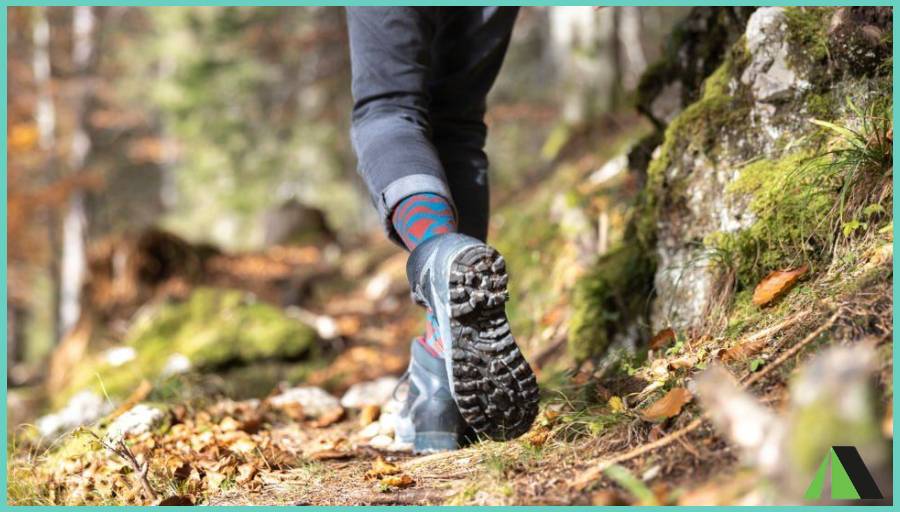
Take Advantage of Breaks to Improve Prevention
The breaks taken in the midst of a day’s hike serve not only to regain strength or hydrate but also as an opportunity to optimize prevention against foot blister formation. Whenever possible, initiate the practice of removing your boots and socks to allow your feet to breathe. Take advantage of sunlight to dry your socks to eliminate accumulated moisture from the previous hours of walking.
Open your shoes wide to achieve the same result. Following this, various options are available to you: consider a brief foot massage, reapply talcum powder, or replace blister prevention strips, among other choices. If you feel a blister forming somewhere, you can add a second skin bandage over it.
Simple Things to Do After a Day of Hiking
In the evening, when you start to take a well-deserved rest after a day of walking, you can put into practice simple gestures to continue preventing foot blisters.
Start by removing your shoes and then your socks and take the opportunity to spend most of the evening barefoot. This will have the effect of softening the epidermis and accustoming the arch of the foot.
On the material side, remember to dry your shoes, socks, and soles as much as possible! Remember that keeping your feet dry helps prevent blisters from forming. Then, you can repeat the operations performed previously: massages and application of anti-friction cream. Then a good recovery through long nights of sleep allows your epidermis to regenerate better.
Finally, tell yourself that alcohol consumption significantly increases the acidity of sweat. This will then tend to amplify the probability of overheating the next day. By limiting your alcohol consumption in the evening while hiking, you increase your chances of escaping foot blisters!
Conclusion
A true scourge of hikers, blisters on their feet are not a fatality. Many solutions even prevent their formation and significantly reduce the risk of development during a hike. Before going on a long trail, consider buying hiking shoes, anti-blister socks, and insoles that are adapted to the morphology of your feet. Don’t go on the trail with new shoes, take the time to make them comfortable.
Before leaving in the morning, massage your feet, and apply anti-friction cream & bandage on sensitive areas to limit friction. When stopping, let your feet and socks breathe, and take the opportunity to put talcum powder or bandages where needed. In the evening, limit your alcohol consumption, stay barefoot, and massage your feet. In any case, tie your laces well and finally take full advantage of each kilometer of the way!
I hope this guide proves helpful to you. If you have any questions, feel free to leave a comment below, and we will respond to them as soon as possible.

